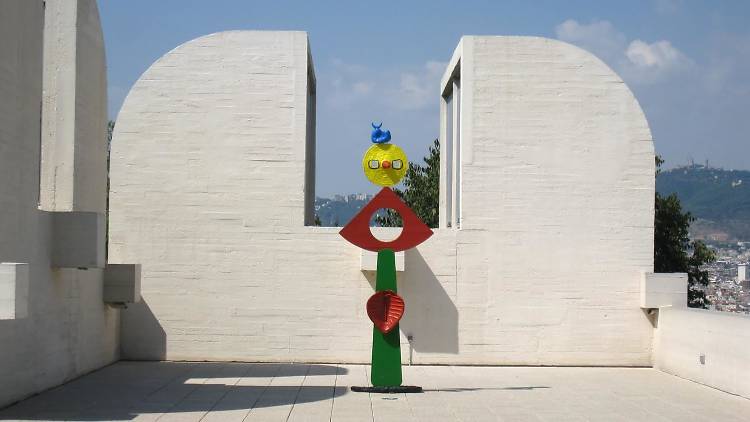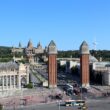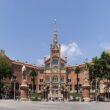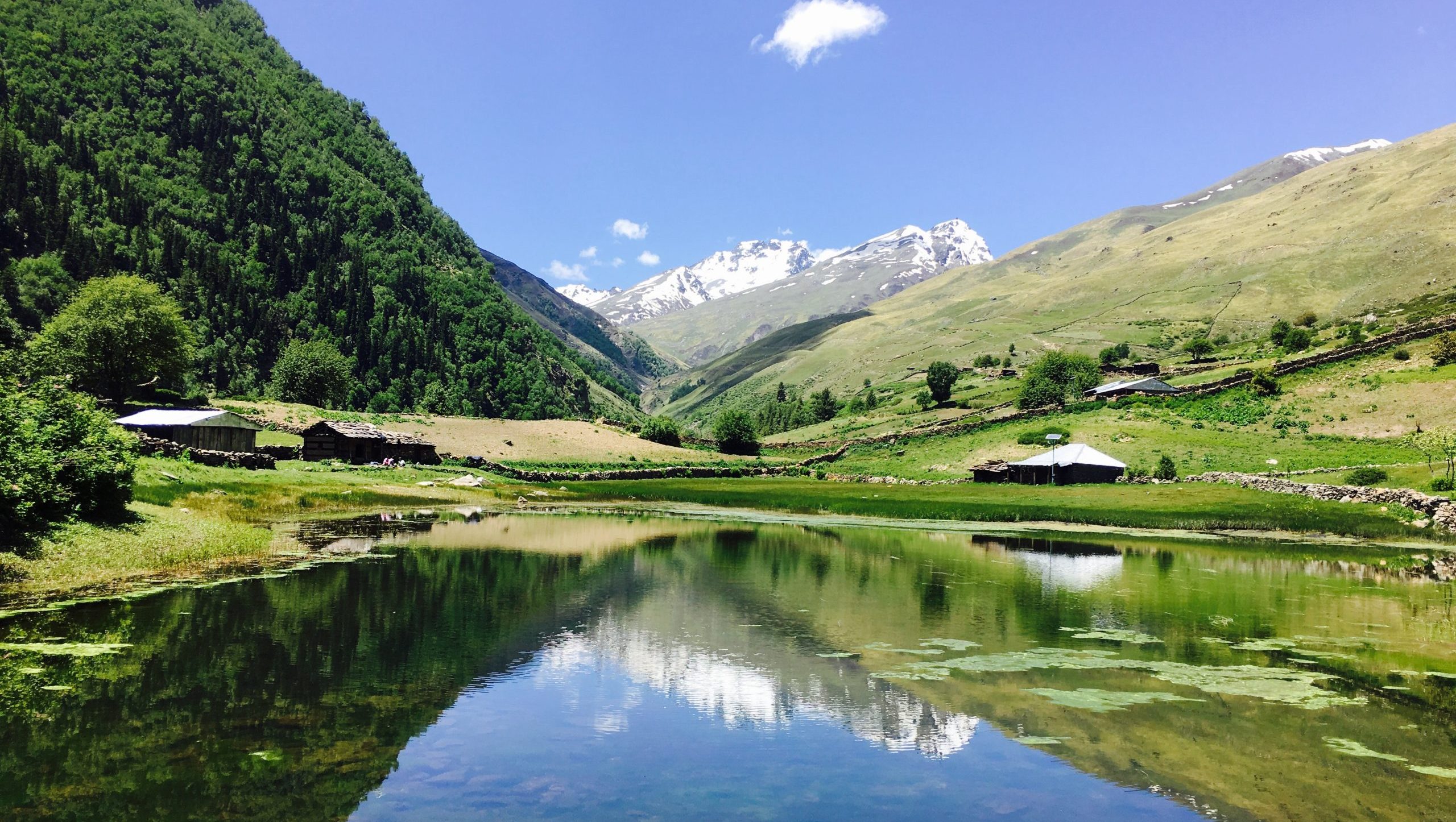The Joan Miró Foundation is more than just a museum; it’s a tribute to one of the 20th century’s most influential artists. Nestled in the vibrant city of Barcelona, this foundation celebrates the life and work of Joan Miró, a master of modern art whose innovative style continues to inspire artists and art lovers alike.
Table of Contents
- The Life and Work of Joan Miró
- History of the Joan Miró Foundation
- Architecture of the Foundation Building
- Permanent Collection
- Temporary Exhibitions
- Educational Programs
- Research and Publications
- Visitor Experience
- Location and Accessibility
- Membership and Support
- Foundation’s Impact on the Art World
- Digital Presence and Resources
- Future Plans and Developments
- Conclusion
- FAQs
The Life and Work of Joan Miró
Early Life and Education
Joan Miró was born on April 20, 1893, in Barcelona, Spain. From a young age, he showed a keen interest in art, which led him to enroll in art classes at La Lonja School of Fine Arts. His early experiences in Barcelona, a city rich in artistic heritage, profoundly influenced his creative journey.
Artistic Style and Influences
Miró’s style is characterized by its surrealism, vibrant colors, and whimsical forms. Influenced by Catalan folk art, Fauvism, and Cubism, his work often defies conventional artistic norms. He was part of the Surrealist movement, although his work also reflects a personal quest to develop a unique visual language.
Major Works and Their Significance
Some of Miró’s most notable works include “The Farm” (1921-22), which captures his fascination with Catalan landscapes, and “Harlequin’s Carnival” (1924-25), a surrealist masterpiece brimming with fantastical elements. These works highlight his ability to blend reality with imagination, creating pieces that are both thought-provoking and visually captivating.
History of the Joan Miró Foundation
Foundation’s Inception and Purpose
Established in 1975, the Joan Miró Foundation was created by Miró himself, along with his friend Joan Prats. The foundation aimed to promote contemporary art and provide a space for artistic dialogue. Miró envisioned it as a dynamic cultural center where his works could be enjoyed alongside those of emerging artists.
Key Milestones in the Foundation’s Development
Since its opening, the foundation has achieved numerous milestones, including hosting major retrospectives of Miró’s work and presenting groundbreaking exhibitions of contemporary artists. Over the years, it has grown into a premier institution for modern art, attracting visitors from around the world.
Notable Exhibitions and Events
The foundation has hosted many significant exhibitions, such as the comprehensive retrospective in 1983 to mark the 90th anniversary of Miró’s birth. It regularly organizes events, workshops, and performances that engage the public and foster a deeper appreciation for contemporary art.
Architecture of the Foundation Building
Design and Construction
The foundation’s building is a work of art in itself, designed by architect Josep Lluís Sert, a close friend of Miró. Completed in 1975, the building reflects the Modernist architectural style with its clean lines, open spaces, and natural light.
Architectural Style and Features
The building’s design emphasizes simplicity and functionality, creating an ideal environment for displaying art. Its white walls and large windows allow natural light to flood the galleries, enhancing the viewing experience. The structure also incorporates elements of traditional Catalan architecture, blending seamlessly with its surroundings.
Integration with the Surrounding Landscape
Located on Montjuïc Hill, the foundation offers stunning views of Barcelona. The building’s terraces and gardens create a harmonious connection with the landscape, providing visitors with a serene and inspiring setting to enjoy Miró’s work.
Permanent Collection
Highlights of the Collection
The foundation’s permanent collection is a treasure trove of Miró’s creations, featuring over 217 paintings, 178 sculptures, 9 textiles, 4 ceramics, and around 8,000 drawings. These pieces span the artist’s entire career, showcasing his evolution and versatility.
Key Pieces and Their Significance
Among the standout pieces are “Woman and Bird” (1967), a towering sculpture that dominates the foundation’s garden, and “The Hope of a Condemned Man” (1974), a poignant triptych reflecting Miró’s response to political turmoil. Each work offers insight into his creative genius and enduring legacy.
Miró’s Donation and Its Impact
Miró’s generous donation of his works laid the foundation for the museum’s collection. His intent was to ensure that his art would be accessible to the public, fostering a deeper understanding of his artistic vision. This act of philanthropy has had a lasting impact, making the foundation a key cultural institution.
Temporary Exhibitions
Overview of Past Exhibitions
The foundation has hosted numerous temporary exhibitions, showcasing both established and emerging artists. These exhibitions often explore contemporary themes and innovative artistic practices, providing a platform for creative expression and experimentation.
Upcoming Exhibitions
Visitors can look forward to a diverse array of upcoming exhibitions that promise to engage and inspire. The foundation continually updates its program, ensuring a dynamic and ever-evolving experience for art enthusiasts.
Collaboration with Other Institutions
The foundation collaborates with various international museums and cultural organizations, bringing a global perspective to its exhibitions. These partnerships enhance the foundation’s reach and influence, allowing for a richer and more diverse artistic dialogue.
Educational Programs
Programs for Children and Schools
The foundation is committed to fostering a love of art in young people. It offers a range of educational programs tailored for children and schools, including interactive workshops, guided tours, and creative activities that encourage hands-on learning.
Workshops and Guided Tours
For visitors of all ages, the foundation provides workshops and guided tours that delve into Miró’s art and techniques. These programs offer a deeper understanding of the artist’s work and the broader context of modern art.
Impact on Art Education
Through its educational initiatives, the foundation plays a crucial role in art education. By engaging the community and inspiring future generations of artists and art lovers, it helps to cultivate a vibrant cultural environment.
Research and Publications
Research Initiatives
The foundation supports scholarly research on Joan Miró and modern art. It offers resources for researchers, including access to its extensive archives and library, fostering academic study and critical analysis.
Publications and Catalogs
The foundation publishes a range of materials, including exhibition catalogs, scholarly books, and educational guides. These publications contribute to the broader discourse on Miró’s work and contemporary art, making knowledge accessible to a wider audience.
Contribution to Art Scholarship
Through its research and publications, the foundation has made significant contributions to the field of art scholarship. Its efforts help to preserve and disseminate knowledge about Miró’s work and influence, ensuring his legacy endures.
Visitor Experience
Visiting Hours and Ticket Information
The foundation is open to the public throughout the week, with specific visiting hours that can be checked on its official website. Tickets can be purchased online or at the entrance, with various pricing options available.
Facilities and Amenities
Visitors can enjoy a range of facilities, including a café, a gift shop, and accessible restrooms. The foundation also offers free Wi-Fi, ensuring a comfortable and convenient experience for all guests.
Tips for Visitors
To make the most of your visit, consider joining a guided tour or attending one of the foundation’s special events. Plan ahead by checking the exhibition schedule and purchasing tickets in advance to avoid long lines.
Location and Accessibility
Address and Directions
The foundation is located at Parc de Montjuïc, s/n, 08038 Barcelona, Spain. It’s easily accessible by public transportation, with several bus and metro lines serving the area.
Public Transportation Options
Visitors can reach the foundation via the Barcelona Metro (L3 line, Paral·lel station) or by taking one of the many bus routes that stop nearby. There is also a funicular railway that offers a scenic route to Montjuïc Hill.
Accessibility Features
The foundation is committed to ensuring accessibility for all visitors. It offers wheelchair access, elevators, and accessible restrooms. Additionally, there are resources available for visitors with visual and hearing impairments.
Membership and Support
Membership Benefits
Becoming a member of the Joan Miró Foundation offers numerous benefits, including free admission, exclusive access to events, and discounts at the gift shop and café. Members also receive updates on upcoming exhibitions and programs.
How to Become a Member
Joining the foundation is easy and can be done online or in person. Various membership levels are available, catering to individuals, families, and students, each offering unique benefits and privileges.
Supporting the Foundation Through Donations
Donations play a vital role in supporting the foundation’s mission. Contributions help fund exhibitions, educational programs, and preservation efforts, ensuring that Miró’s legacy continues to inspire future generations.
Foundation’s Impact on the Art World
Influence on Contemporary Artists
The foundation’s influence extends beyond preserving Miró’s work; it actively shapes the contemporary art scene. Many artists draw inspiration from Miró’s innovative techniques and bold vision, reflecting his enduring impact on modern art.
Role in Preserving Miró’s Legacy
By maintaining an extensive collection of Miró’s works and promoting research, the foundation plays a crucial role in preserving his legacy. Its efforts ensure that future generations can appreciate and learn from his artistic contributions.
Contribution to the Cultural Landscape
The Joan Miró Foundation is a cornerstone of Barcelona’s cultural landscape. Its presence enriches the city’s artistic heritage and attracts visitors from around the world, contributing to the local economy and cultural vibrancy.
Digital Presence and Resources
Official Website and Online Resources
The foundation’s official website is a comprehensive resource for information on exhibitions, educational programs, and visitor services. It also offers a virtual tour, allowing art enthusiasts to explore the collection from anywhere in the world.
Virtual Tours and Online Exhibitions
In response to the growing demand for digital engagement, the foundation provides virtual tours and online exhibitions. These digital offerings expand the foundation’s reach, making its art accessible to a global audience.
Social Media Presence
The foundation maintains an active presence on social media platforms, sharing updates, insights, and behind-the-scenes content. Followers can stay connected with the latest news and engage with the foundation’s community.
Future Plans and Developments
Upcoming Projects and Expansions
The foundation continually seeks to innovate and expand its offerings. Future projects include new exhibitions, building expansions, and enhanced educational programs, all aimed at enriching the visitor experience.
Strategic Goals for the Future
Looking ahead, the foundation aims to strengthen its position as a leading cultural institution. Its strategic goals include increasing visitor engagement, fostering international collaborations, and advancing its educational mission.
Community Engagement Initiatives
The foundation is dedicated to engaging with the local community through various initiatives. These include outreach programs, public art projects, and partnerships with local schools and organizations, fostering a sense of shared cultural heritage.
Conclusion
The Joan Miró Foundation stands as a testament to the enduring power of art. It not only preserves the legacy of Joan Miró but also serves as a vibrant center for contemporary creativity. Whether you’re an art aficionado or a casual visitor, a trip to this foundation is an inspiring journey into the world of modern art.
FAQs
What are the opening hours of the Joan Miró Foundation?
The foundation is typically open from 10 AM to 6 PM, with extended hours during the summer months. It’s always best to check the official website for the most current schedule.
Is there a guided tour available?
Yes, the foundation offers guided tours in multiple languages. These tours provide in-depth insights into Miró’s work and the foundation’s exhibitions.
Can I take photographs inside the foundation?
Photography is allowed in most areas of the foundation, but flash and tripods are typically prohibited. Always check specific guidelines posted on-site.
Are there any discounts available for students or seniors?
Yes, the foundation offers discounted tickets for students, seniors, and other eligible groups. Details can be found on the foundation’s website or at the ticket counter.
How can I support the Joan Miró Foundation?
You can support the foundation by becoming a member, making a donation, or participating in its various programs and events. Every contribution helps sustain the foundation’s mission and activities.









